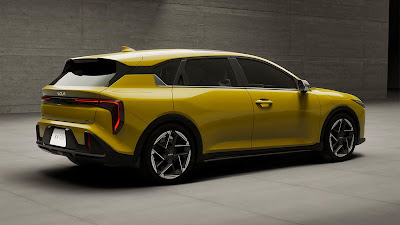To understand the car that enthusiasts refer to as Godzilla, you first must turn your mind back to the year 2007. The R35 Nissan GT-R entered the automotive world at the Tokyo Motor Show that year with an asteroid-sized impact and sent shockwaves through the automotive landscape.
Styling-wise, there was and still is nothing else like it. Four round taillights harken back to previous Skyline GT-Rs. But a gaping grille, swept back headlights, bulging wheel arches, and angular body lines made the GT-R look more like a jet fighter than a car. Inside the car, the driver and passengers could keep track of various metrics such as coolant and oil temperatures, g-forces, boost pressure and other engine parameters through a central touchscreen with graphics made by the same company behind the Gran Turismo video games.
But the real meat of the GT-R story lies in its numbers. Courtesy of a twin turbocharged 473 horsepower V6, a sophisticated all-wheel drive system, and a six-speed dual-clutch transmission, 0-60 miles per hour arrived in 3.3 seconds and a quarter mile took only 11.5 seconds to cover at 124 mph. A stock GT-R ran around the famous Nürburgring racecourse in seven minutes and 29 seconds. Notably, all of these stats bested those of the Porsche 911 Turbo with an MSRP nearly double the GT-R’s $70,475 price tag. Few if any other cars before the GT-R made going so fast so easy for so little money.
Rolling updates kept the GT-R competitive with its contemporaries over the years. Power and torque increased gradually to its current state of 565 horsepower and 467 pound-feet. 0-60 dropped to 2.9 seconds. A hardcore NISMO model arrived in 2015 with more than 600 horsepower. Chassis and suspension refinements addressed concerns of the car not being involving enough to drive.
Unfortunately for Nissan, while its engineers were improving the GT-R, the engineers at other carmakers were busy working on their own sports cars. In the fifteen years the GT-R has been on sale in its current iteration, Chevrolet has developed two generations of Corvettes cumulating with the current mid-engine C8. Porsche has likewise gone through two generations of 911s. The current 911 Turbo S offers near-Bugatti level performance (0-60 in 2.1 seconds) for a relative fraction of the price.
Speaking of price, MSRP for 2024 GT-Rs have risen consistently over the years to just under $123,000. That’s a heavy sum for a car that on the outside hasn’t changed much in fifteen years. It also hasn’t changed much on the inside either. The GT-R still makes due with an 8-inch touchscreen in a world where 10 inches or more is the norm in everything from compact sedans on up. And those Gran Turismo mimicking performance readouts that captivated car geeks remain carbon stamped in the PlayStation 3 era. Interior materials on early cars probably would be best described as adequate for a car costing a little less than $100,000. While quality has gone up somewhat as the GT-R solidly breached the six figure threshold, you can still find richer materials in Audi, Porsche and Mercedes sports cars costing similar amounts of money.
Then there’s the way the GT-R drives. It still does a fantastic job of making a novice driver feel like a racing champion, but the march of powertrain technology has ironed out a lot of the kinks that are still experienced when driving a GT-R. Back in 2008, there weren’t many other turbocharged V6 all-wheel drive supercars. Nowadays, forced induction is nearly ubiquitous, engines are downsizing, and many supercars also have electric components to smooth out and increase power delivery. Nissan rewrote the performance rulebook with the GT-R all those years ago, but everyone from Porsche, to Chevrolet, to McLaren, to Ferrari have been making amendments ever since. Driving a GT-R today means putting up with turbo whooshes and transmission clunks that have mostly been bred out of fast cars.
It's unclear what the future holds for the next generation GT-R, if there even is one at all. No doubt electric power will play a factor. A recent concept car called Hyper Force may offer a clue as to what a new GT-R could look like. In addition to active aero elements, the Hyper Force has a full electric drivetrain with dual motors and a sold state battery pushing out more than 1,000 horsepower.
While we wait for whatever comes next, we will continue to celebrate all that the R35 GT-R accomplished over its lifetime. It pioneered or was one of the early adopters of go-fast technology that is taken for granted in most modern supercars. It’s been immortalized in popular culture both in its home market of Japan and abroad. It is unquestionably the vehicular Godzilla.







